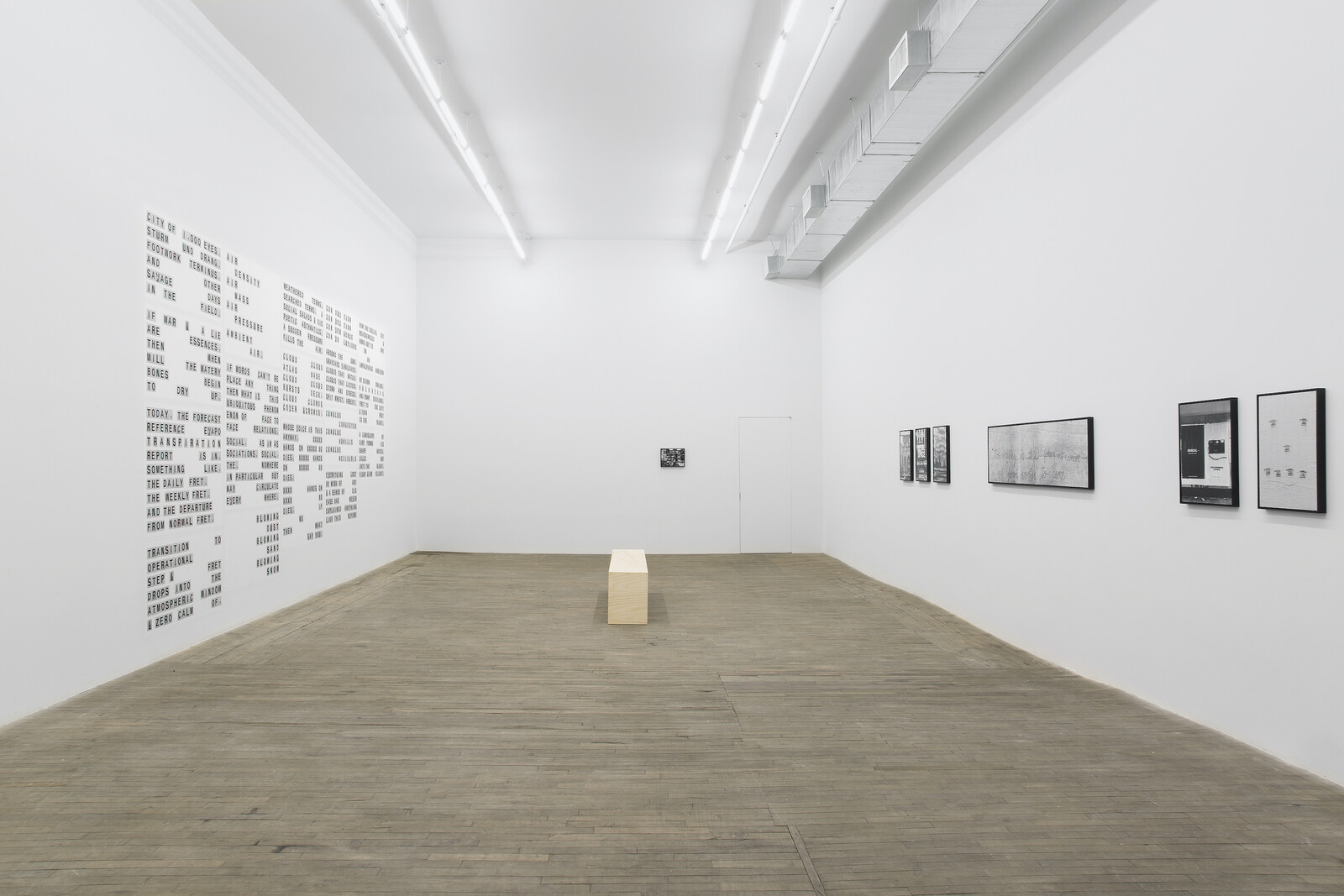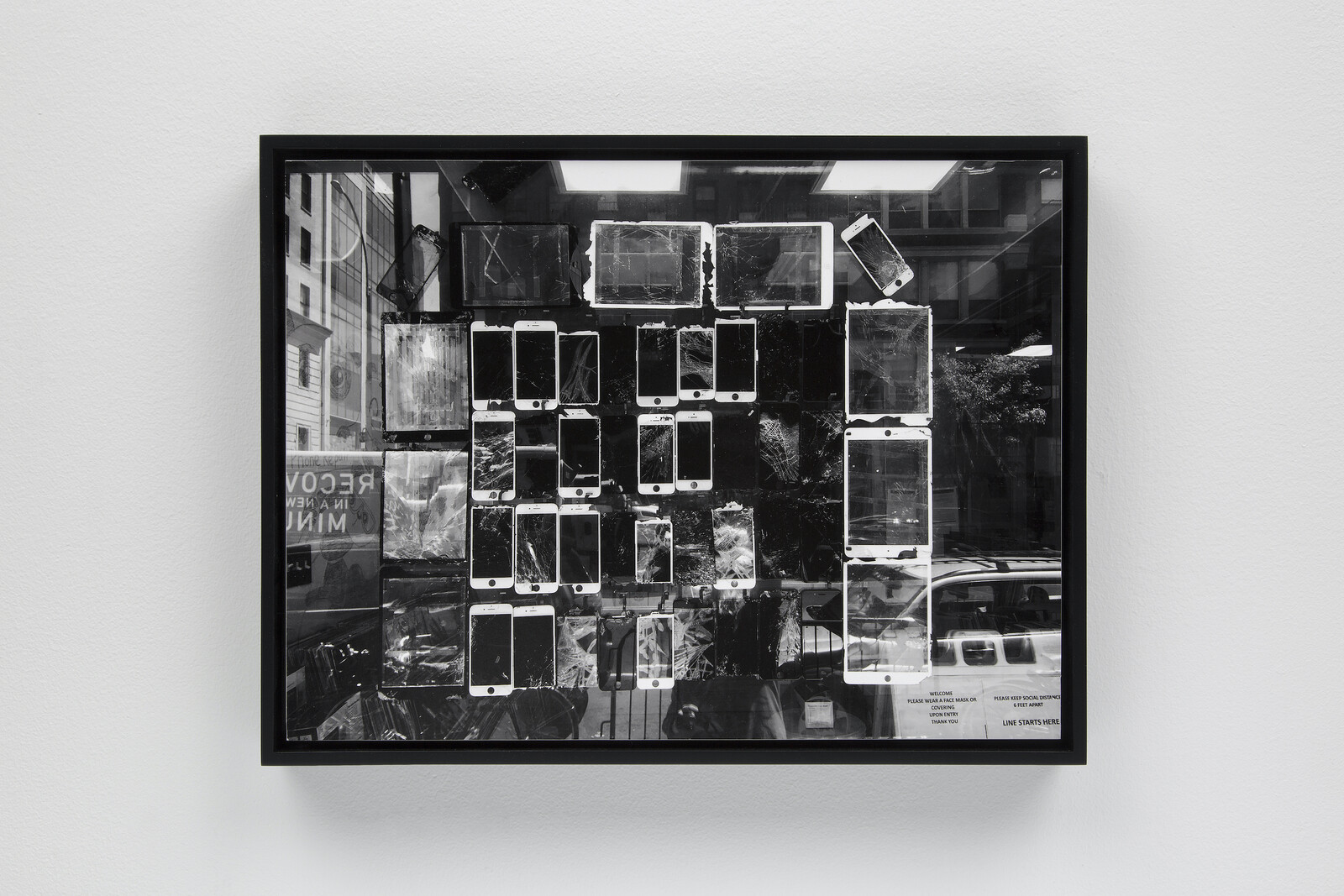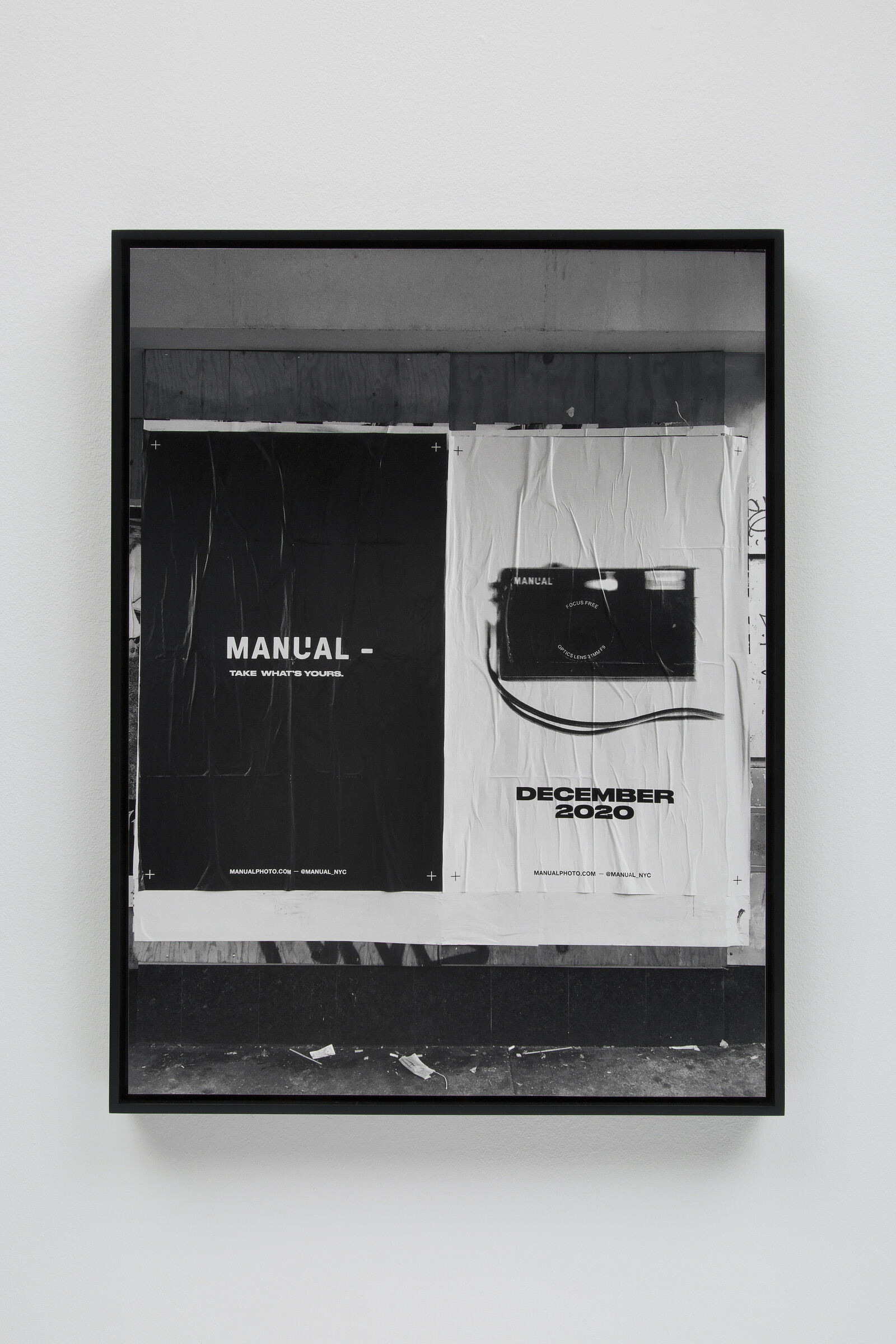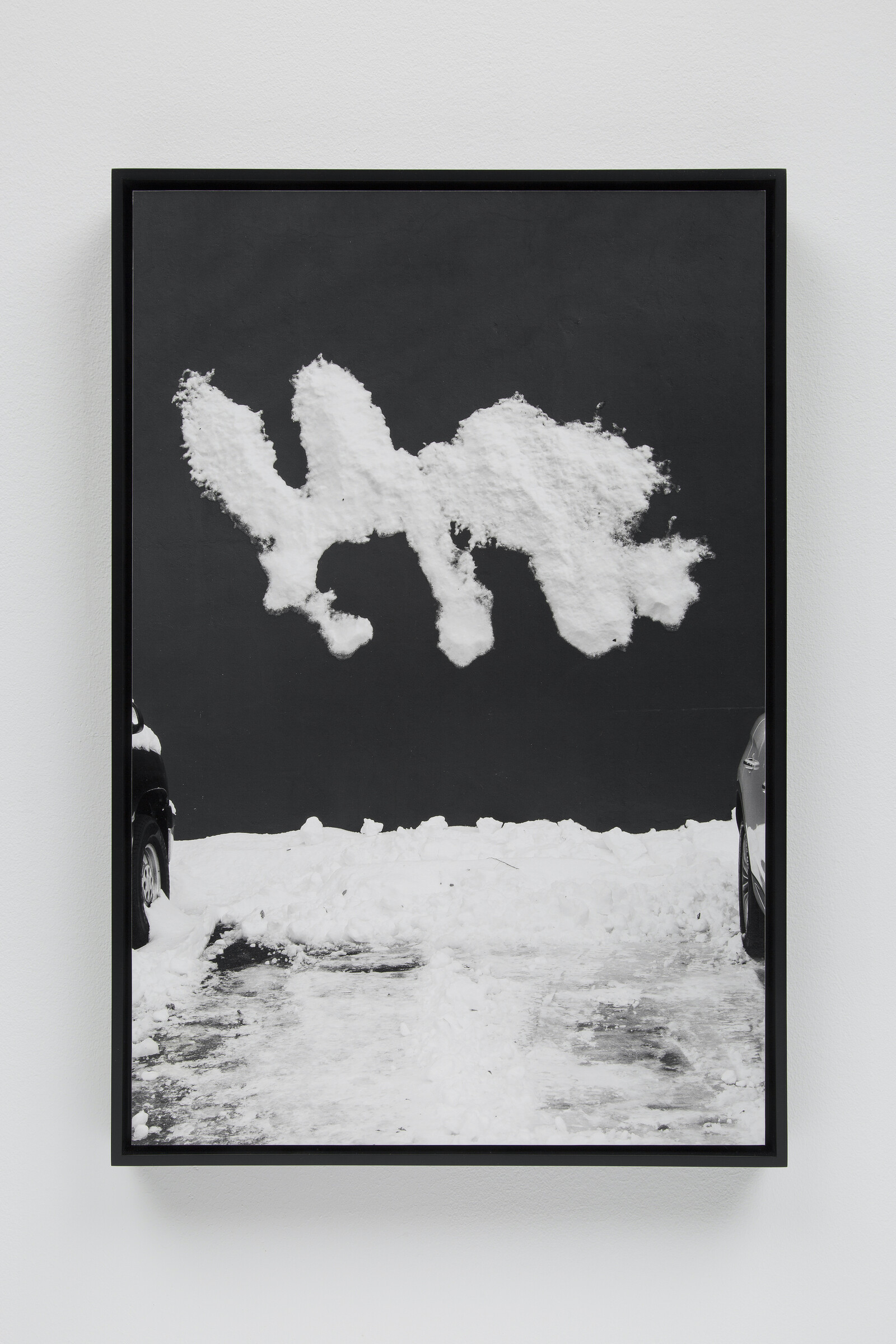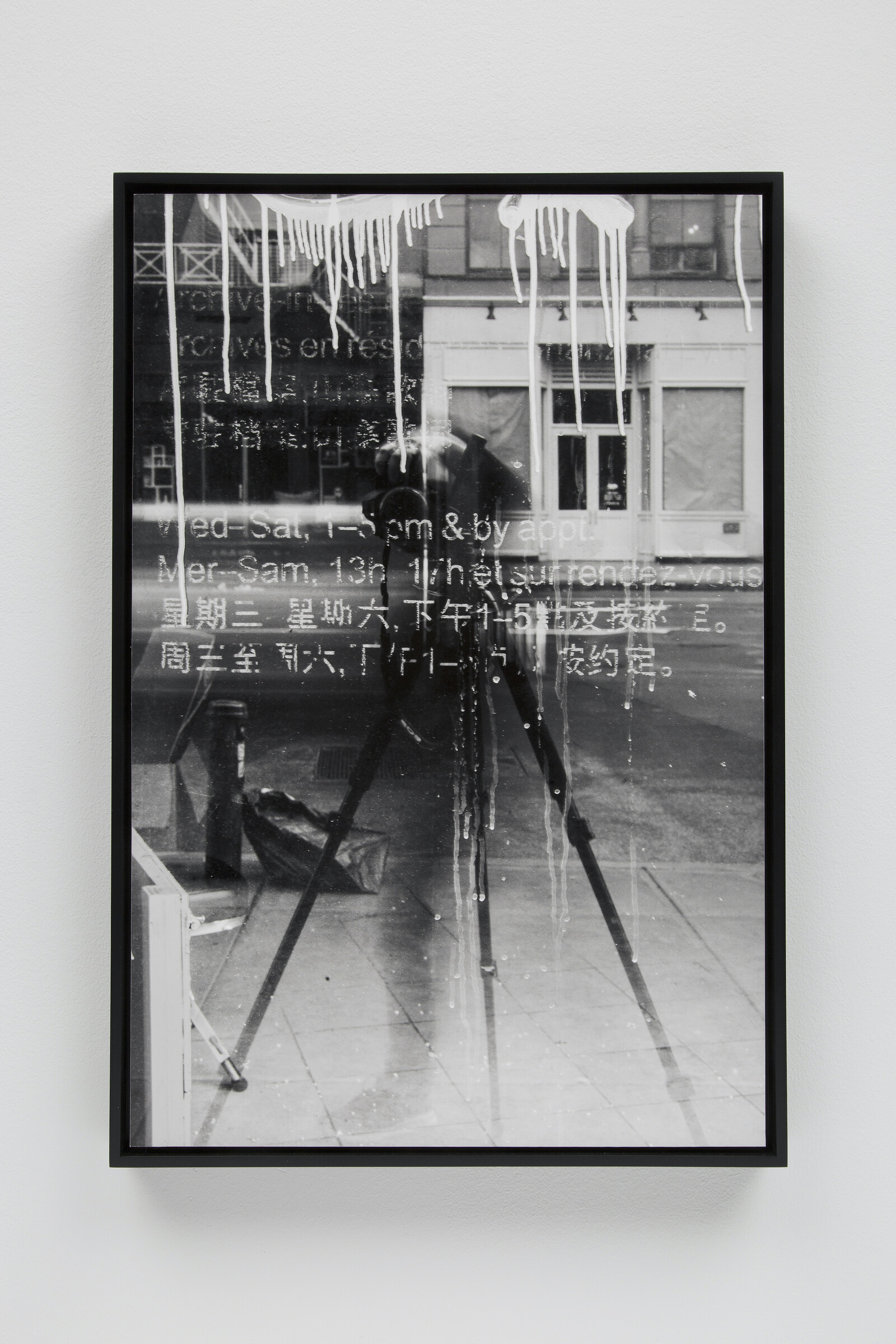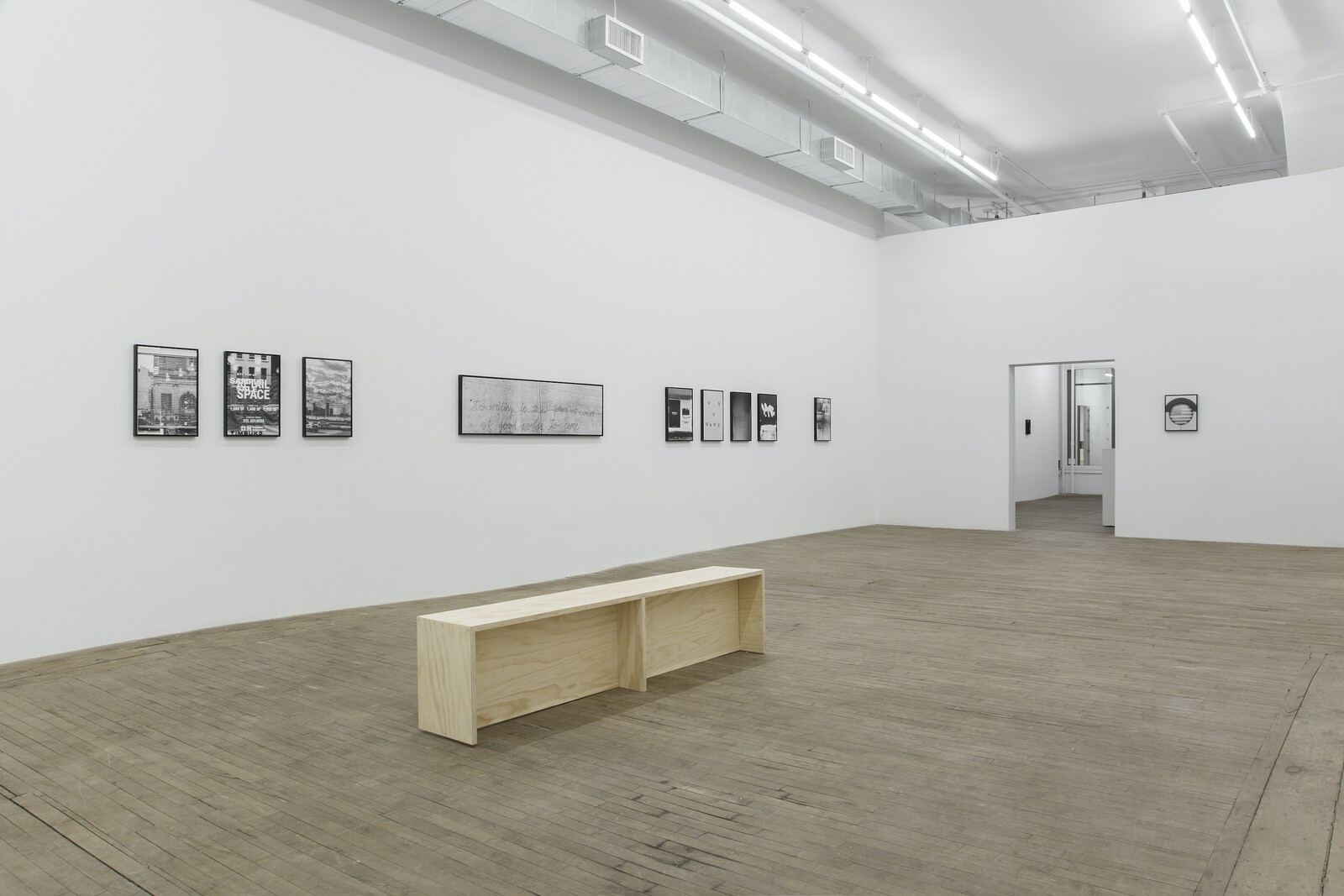FRET is an acronym for Forecast Reference Evapotranspiration Report. It is a record of the rate of evaporation and transpiration, or how fast water moves from the various living and non-living surfaces of the earth—dirt, lakes, oceans, plant bodies, forest canopies—back into the atmosphere. The information is useful in deciding how to irrigate crops and manage municipal water supplies; decreased precipitation depths, as a result of climate change, mean water will evaporate more quickly and increase irrigation demands in arid and semi-arid climates. Fret is also, of course, a verb that means “to worry” and a noun that refers to a number of things: a repeating, geometric ornament that forms part of a frieze, the fret saw that might be used to cut such ornamental designs into wood, and the raised portion on the neck of many stringed instruments.
Shannon Ebner’s “FRET SCAPES” consists of thirteen black-and-white photographs arranged around a five-columned floor-to-ceiling poem called FRET, in which Ebner has some fun playing with the acronym in relation to the common verb as well as its technical use. The National Weather Service gives daily, weekly, and other reports that Ebner transcribes: “THE DAILY FRET/THE WEEKLY FRET/AND THE DEPARTURE/FROM NORMAL FRET.” It is a clever and concise commentary on a common relationship to news and weather forecasts and reports.
The all-caps is not meant to be loud or insistent: the whole poem is written in the “wet letter alphabet,” a font created by Ebner through the tedious process of photographing paper letters briefly stuck to the wall with water. If you look closely at the V, for example, you will notice a hand—blurry, index finger extended—holding up the right-hand side of the letter. The diagonal line of the N is a bit crooked. This typographical experiment was completed several years ago, but the slight threat to language posed by water is a neat encapsulation of fretting about FRET. To put it another way, the soggy letters about to slip from view and threaten legibility are the perfect medium for the construction of a fretscape—a neologism that seems like it should be part of our normal vocabulary. It recalls a line from Roni Horn’s Saying Water (2005): “Thinking about water is thinking about the future. Or just a future. Mine. Yours.”
The poem isn’t the only text in the show. CIVIC TYPE FACE (2022) features barely legible text from a rubber stamp imprinted on a painted concrete surface in a sloppy but intentional-seeming pattern. NON IDEA SED IN REBUS (2021) records what might be offered as a toast written in wet concrete: “to waiting in the forever wet cement of good worlds to come.” Most of the other photographs contain text in the form of signage, price tags, and other indications of commerce, frequently layered onto each other or appearing in indecipherable layers due to reflections made weird and dense by their photographic capture. Other images—handprints like cave paintings, snow improbably stuck to a vertical surface like some hibernal iteration of the wet letters—gesture at text: the minor theme of language as object weaves through this anxious consideration of water and its imminent departure from earth. One of the older, but still operational, uses of the noun, “fret” is “ornamental interlaced work; a net; an ornament… consisting of jewels or flowers in a network.” The operative word here might be “tangled.” Within the frame of any one image, nothing so ordered as a network emerges, but the interlacing of images in reflective layers feels important here.
And then there is the literal network. An image of many broken smartphone and tablet screens (COMMERCIAL STREET, 2022) could operate as synecdoche for the show. The plate glass offers fragments of text in reverse as a sort of ghostly replacement for the absent content of the many device screens, and the image of a building’s exterior creates an illusion of depth. The fretting, of course, comes with the broken devices. They are sharp and violent. In addition to the idiotic anxiety that we all experience and continuously repress as a result of these devices, they seem now to threaten us bodily as well as mentally. Which is, of course, one of the things we are repressing. They are destroying vast areas with the extraction of rare ores such as coltan, giving us cancer, and leaking poison into the water supply when we throw them away. It bears repeating that “fretscape” should be a word we use. “FRET TO THE LEFT/& THEN FRET/TO THE RIGHT/A LANDSCAPE OF/DIRT FORMS ITS/SHAPE NOTES.”
It is unfortunate that Ebner’s poem is full of references to the French philosopher Bruno Latour. This influence appears in the “reassembled social,” the play with the term “asocial,” the pointed use of “associations,” and a “social” that is nowhere—these all sound like clever turns of phrase out of context, but they import a philosophy that misunderstands power, economics, national sovereignty, and, arguably, climate change itself. What is really behind all these a’s is a cynical, slippery, convenient apoliticism that masquerades as complexity by claiming that each individual object and situation is best approached as totally singular and unrepeatable. You can see the appeal for a visual artist.
These references sap the show of meaning because they contradict, rather than complicating and enriching, what has clearly been recorded by Ebner’s camera: the detritus of a social world. What is on record here are commodities—objects concealing webs of social relations—that can be unpacked, demystified, and traced even if, in the case of the touchscreens, it is their dysfunction that is on display. The smartphones are worth fretting over for reasons that are neither mysterious nor specific to those particular smartphones in that particular window. I suspect that the storm drains in the poem may be a reference to another object-oriented ontologist, Jane Bennett, who would like us to believe that a purely descriptive, contemplative approach to urban infrastructure and dead rats yields more than a studious consideration of the human and industrial origins of waste, poison, and sea levels. This is simply untrue. It fails as both poetry and politics.
Thankfully, the rest of Ebner’s show does not. The images, modest in scale and hung in a row at eye level, give us the complex, object-oriented, and open-ended narrative that observant, smart image-making does best. What Ebner’s dense, odd moments in the lives of objects and buildings suggest is a significance and a narrative that “asociological” readings would dismiss out of hand. I have always suspected that art and poetry do what the Bennetts of the academic world aspire to. This seems to me to be proof of this. The intellectual scaffolding is redundant. The photographs have more than enough to say.

